Enjoy our guide to Kazakhstan food and sweep up stories of bravery and resilience amid tasty cuisine in the largest country in Central Asia.
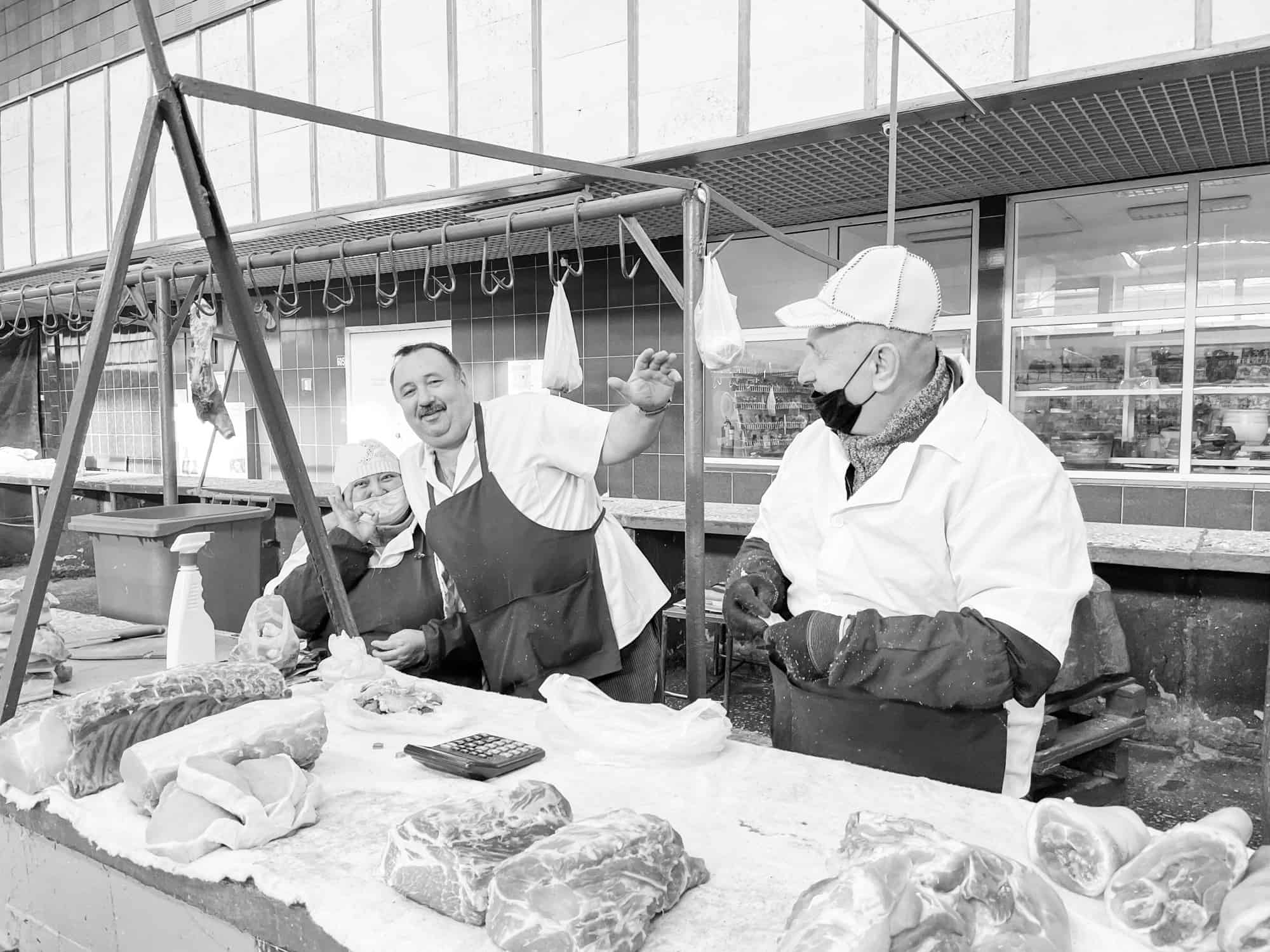
An Introduction to Kazakhstan Food
In this interconnected age, we’ve all heard about and tasted just about everything, haven’t we?
Not so. And nowhere does that become more apparent than in the cities and steppe of the 9th largest country in the world: Kazakhstan.
The Boiled Sheep Head Story
From the moment you book your ticket and make your travel plans, the world will delight in the shock value of one major cultural difference. The practice of serving a sheep’s head at special dinners, with visitors (yes, that means you) being expected to carve out the eyeballs and chomp down on fluffy ears while drinking tea and making small talk about anything other than the loathed false stereotype of Borat.
The reality is rather different.

The Foodie Landscape in Kazakhstan
Yes, in some parts, a boiled sheep’s head forms part of a traditional dinner. And yes, the guest of honour gets the largest part of that.
But that’s nowhere near the whole story. Kazakhstan is a large, multicultural country, with slick modern cities as well as rural nomadic plains.
And as many Kazakhstanis I met wanted to tell me, Kazakhstan is home to more than 100 nationalities and yet no major conflicts. The land was home to nomads for centuries and those banished or fleeing from the Russian Empire that then became the USSR.
The result of all that? An incredibly varied cuisine, with influences from Central Asia and beyond.
And so let me introduce you to this guide to Kazakhstan food and the key dishes that you don’t want to miss.
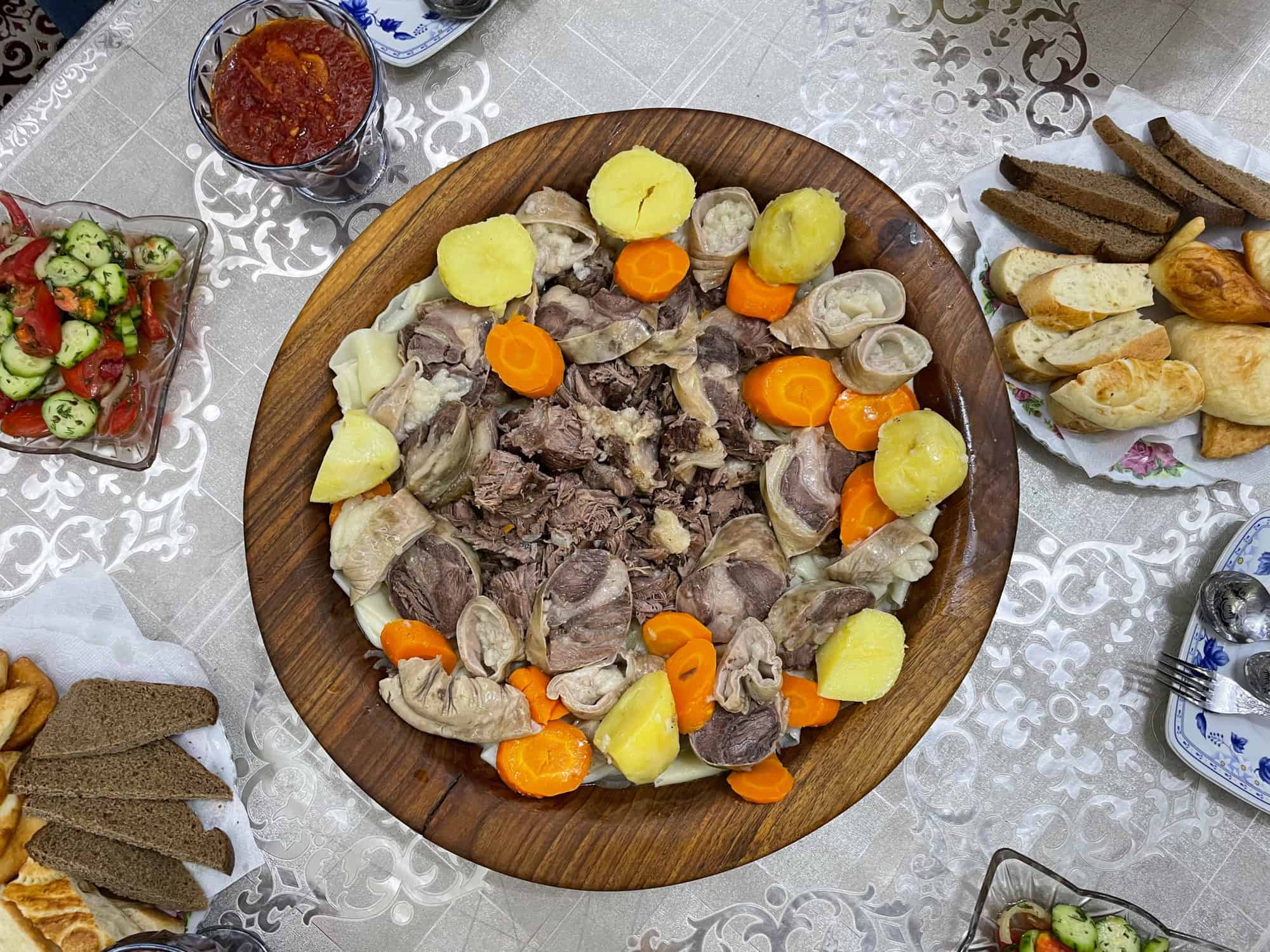
Beshbarmak – The Five Finger Dish
No Kazakhstan food guide can hold its head up high without mentioning the beshbarmak, the official national dish. Beshbarmak is a beast of a feast of a meal. It includes boiled vegetables, stock, a chyk onion broth and hearty chunks of meat, typically horse, sheep or lamb.
On really special occasions, kazy is added as well. Make a note, dear readers, we’ll be back to talk about kazy later on.
The name translates to mean five fingers and, traditionally, that’s how you ate it. For nomadic people travelling across the windy steppe, it was easier to live without the trappings of cutlery and seats. A traditional nomadic table rests near the floor, so you can sit on the ground and pack up and move on more easily afterwards.
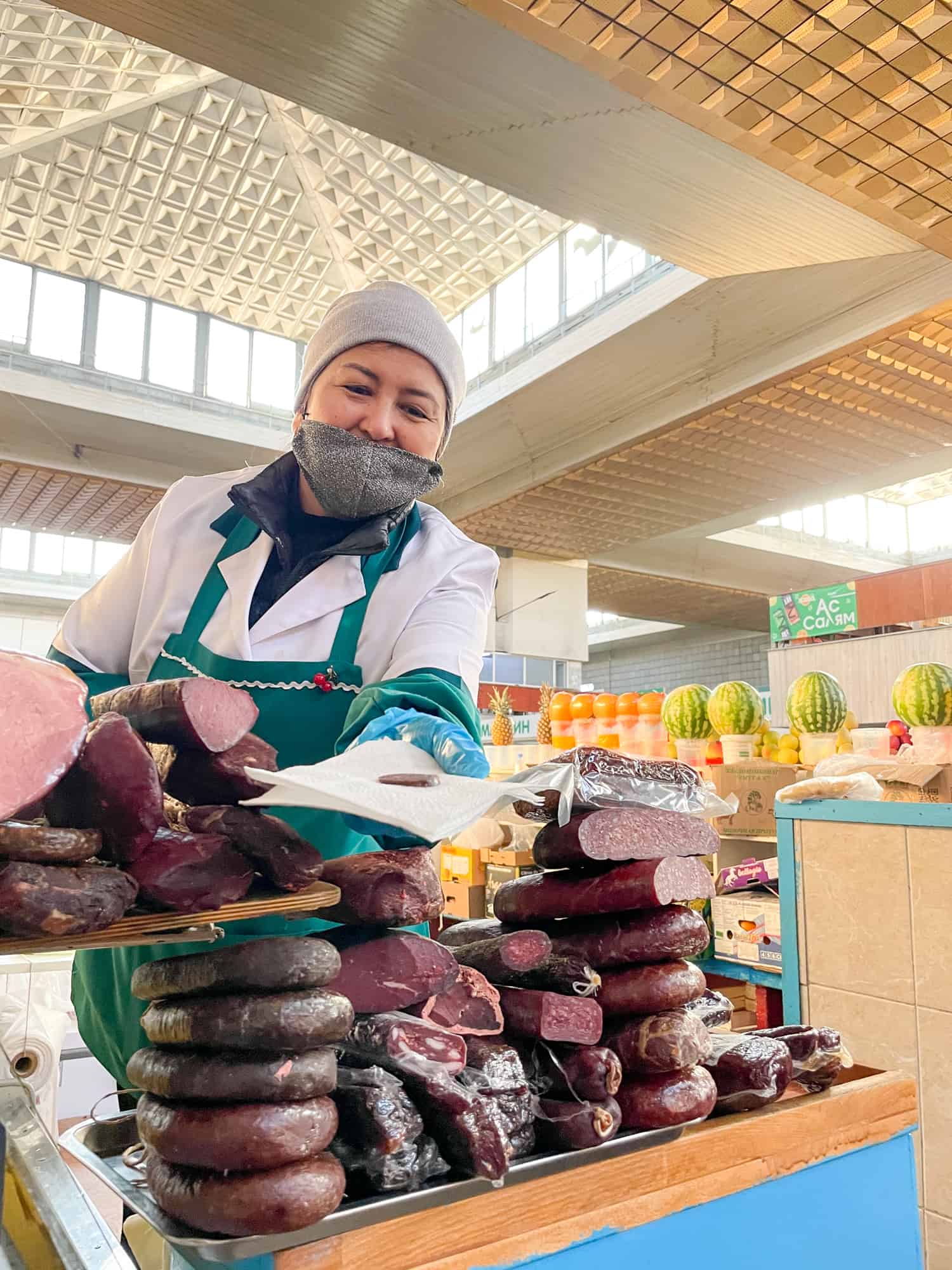
Kazy – The Most Important Sausage
“Nothing beats kazy,” my guide told me, his eyes wistful, smile yearning. “There’s something genetic in me, in Kazakhstan. And every grandmother in the country will tell you the same thing. Kazy makes you strong, it makes things better. And the best has four solid fingers of fat.”
With that introduction, it came as no surprise to see kazy pop up time and again, as an appetiser or addition to a main dish. In the Almaty main food market, the kazy aisles rivalled those for cheese in France.
But what is it?
What is Kazy?
Simply put, kazy is a big fat sausage, with coarse looking contents. It’s typically made from horse meat, a staple in Kazakhstan, and flavoured with garlic, salt and pepper. The meat mainly comes from the ribs and natural casings are still mainly used.
And for all its identity as the most important sausage in Kazakhstan, you’ll also find it in Uzbekistan, Kyrgyzstan and other Central Asian countries.
The texture is moderately chewy but less so than biltong. The flavour depends on the herbs and spices added during production. And those big white globules of fat you can see? The more, the better.
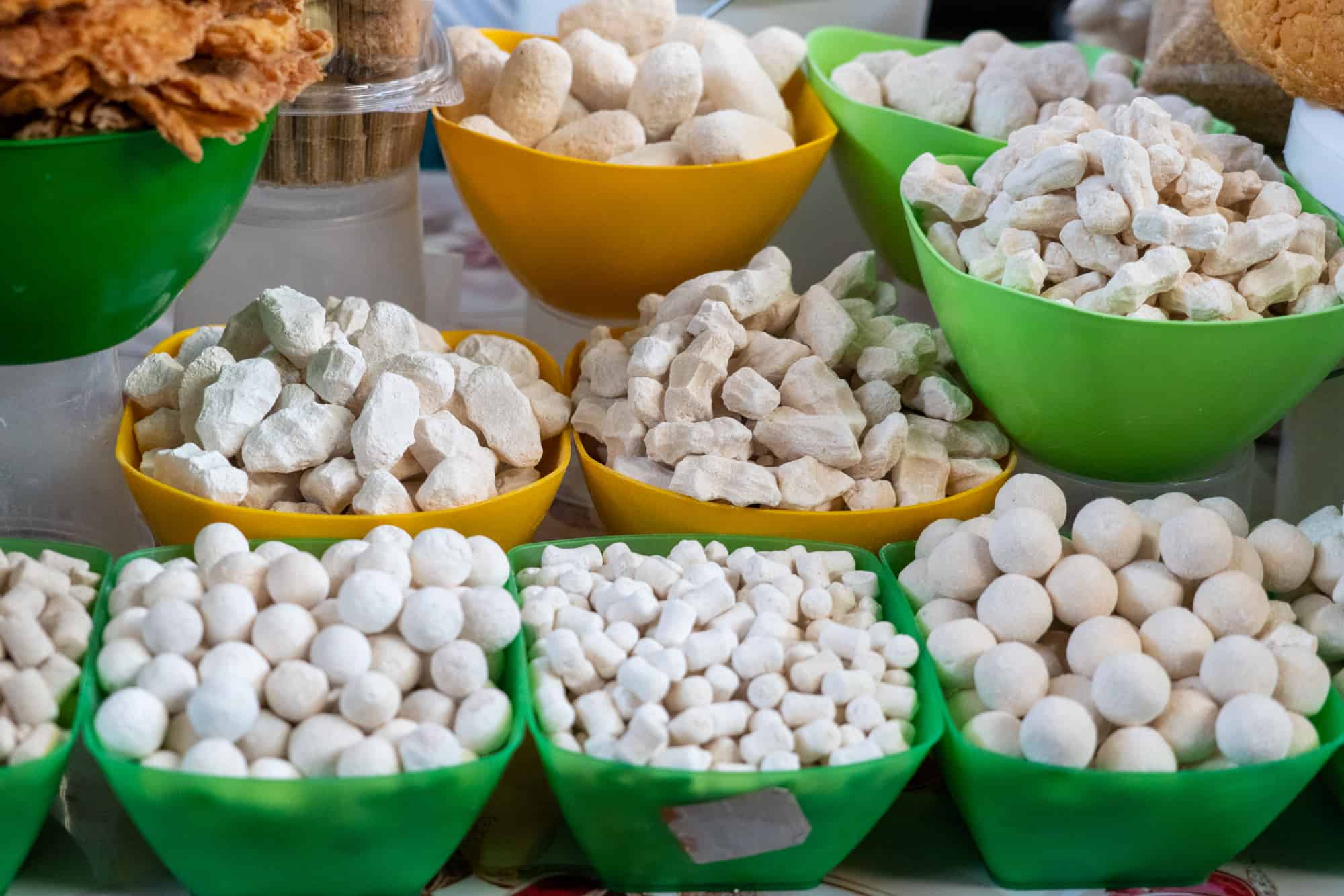
Kurt
Not only do kurt, or qurt, have the most distinctive appearance but they also have the best story.
This calcium-rich ultra hard cheese comes in different pebble, tablet or sphere shapes and can be transported for long distances since it lasts a long time.
During the USSR years, when people were taken from their homes and sent to the gulags in Kazahstan, kurt came into its own.
According to the people I met (and I heard this story a lot) Kazakhs would throw kurt at prisoners to make it look as though they were stoning them in front of the guards. What they were actually doing was sneaking prisoners food to hep keep them going through the harsh winters and even harsher diet.
While appearing to support the violence against “enemies of the people,” they were actually showing compassion and sharing food. Kazakhstanis tend to pride themselves on their hospitality, aversion to conflict and welcoming nature and all of these beliefs and stories are wound up in one small tight, white hard cheese ball.
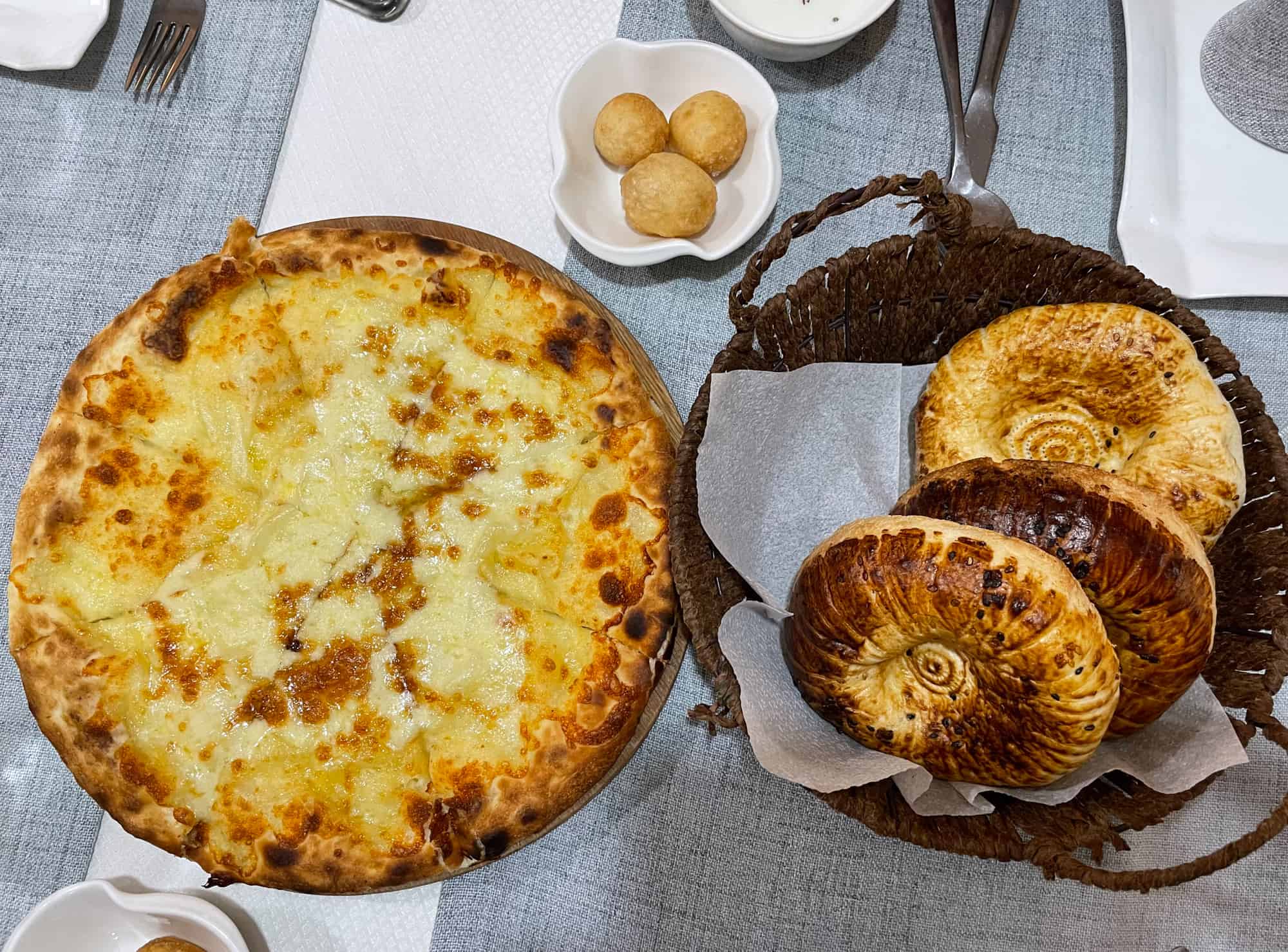
Khachapuri – Cheesy Bread
Now, technically, khachapuri is a Georgian cheese bread but one of the interesting things about food in Kazakhstan is how it draws in influences from surrounding countries and makes them its own. As hot, rich comfort food, you can think of khachapuri as a kind of pizza without the marinara sauce.
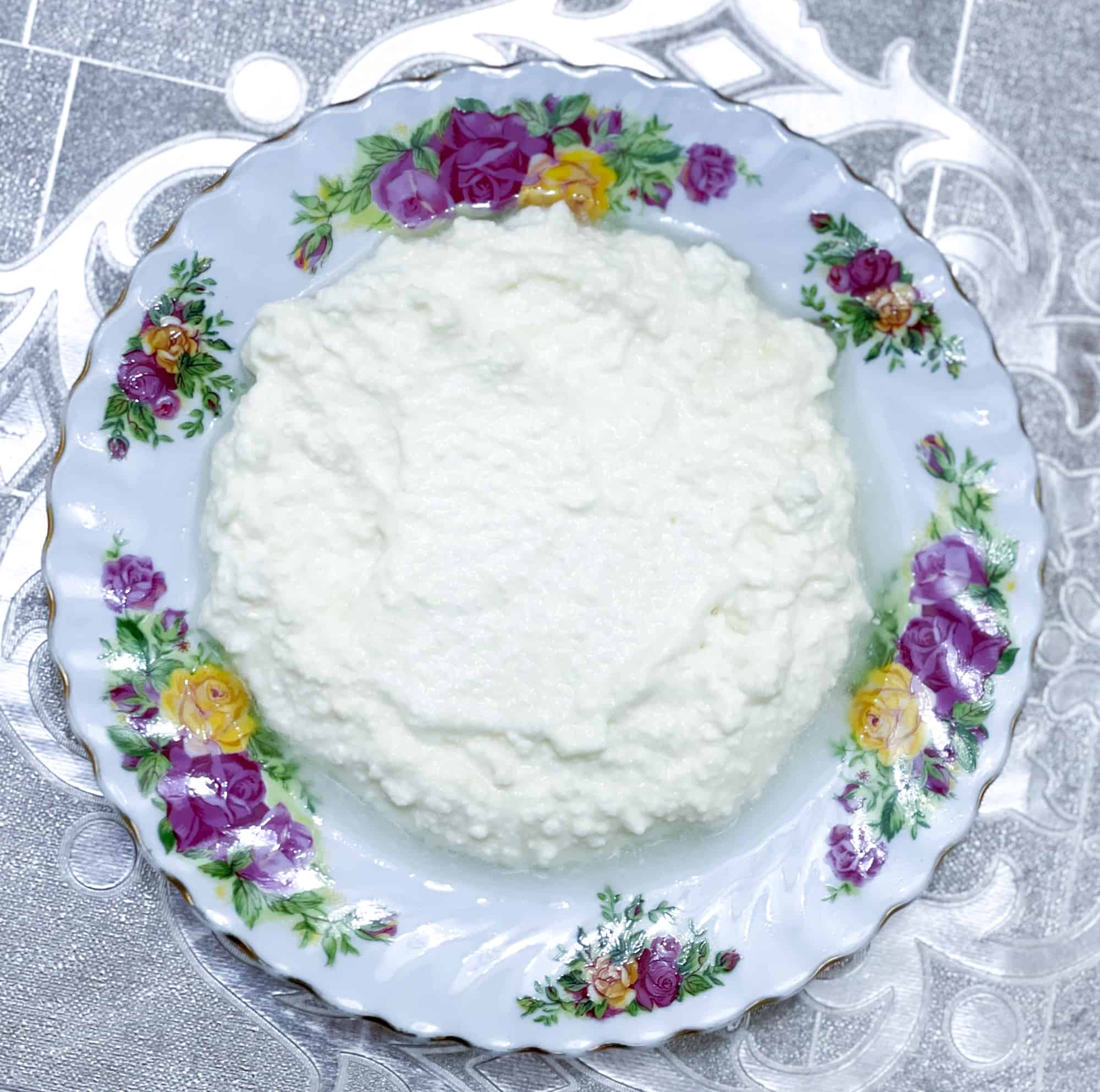
Irimshik: Soft and Hard Cheese
Irimshik is typically made in the spring from boiled horse or camel milk. At first, it looks like a wet, white cottage cheese but it can be preserved by drying into a more caramel coloured block. You’ll find it as an appetiser or side dish in its own right, or inside baursak or mixed with sugar to form sweets.
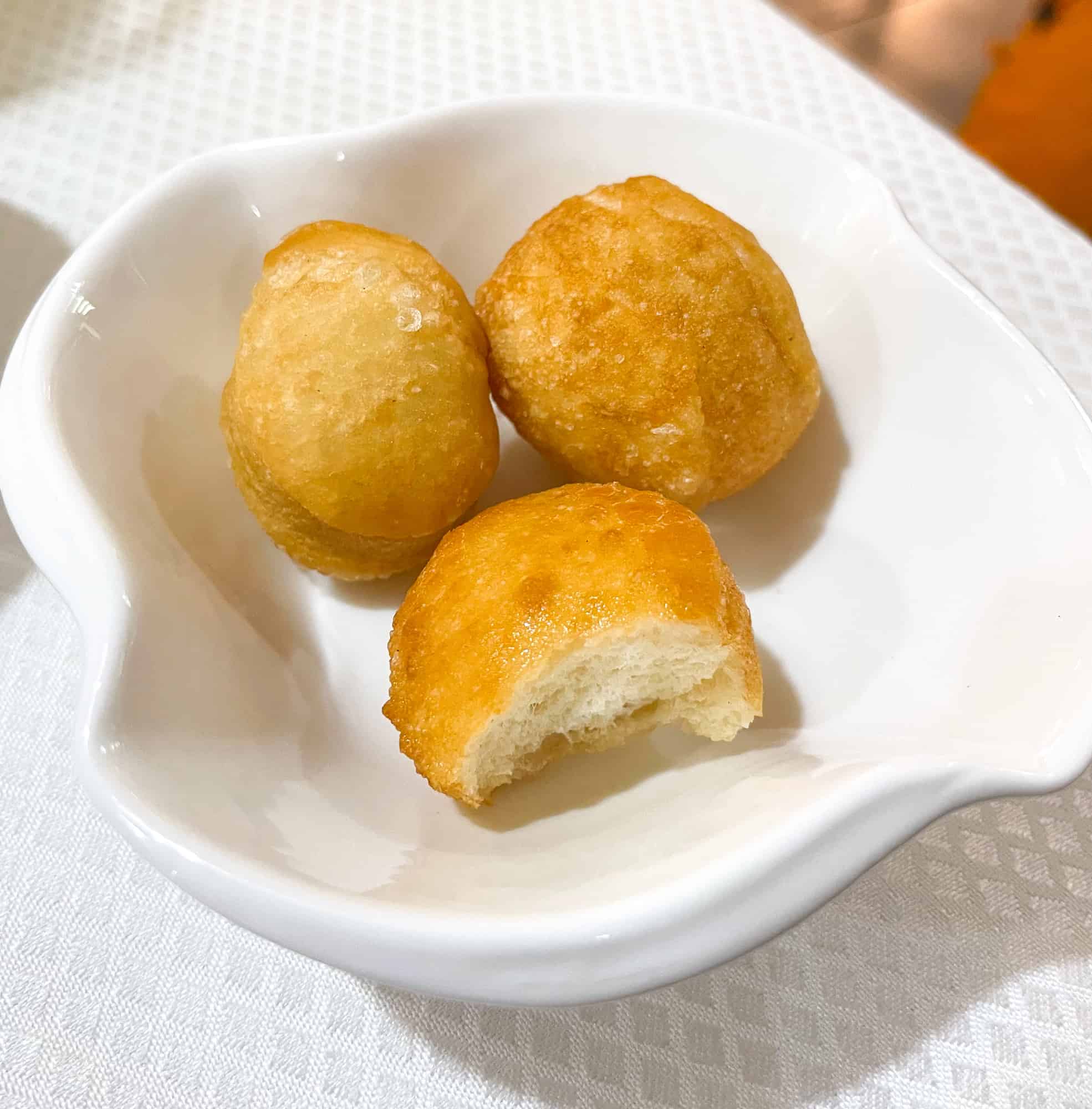
Baursak
Bouncy and brilliant baursak appeared at almost every table in a variety of disguises during my time in Kazakhstan. They’re hot fried dough balls made from flour, eggs, milk, yeast and sugar, sizzled in piping hot fat.
They can be big, they can be small. They can come with irimshik cheese inside. They come with tea, as an appetiser, with a bread basket and even, sprinkled with sugar, as dessert.
If you’re only going to sample one part of Kazakhstan cuisine, let it be baursak!
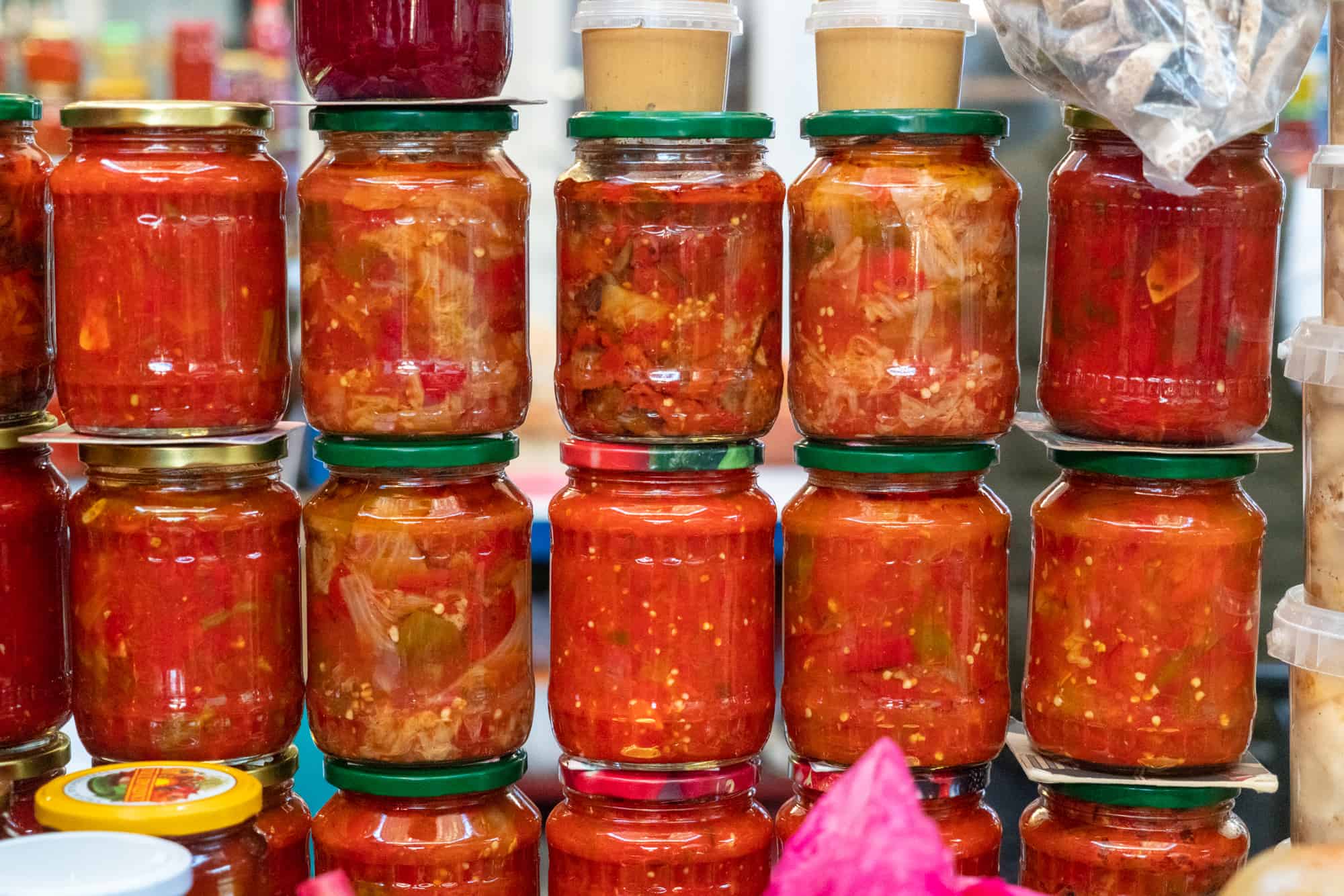
Korean Salad
In the main city of Almaty, a bold and bright Korean influence adds spice and pickle to the tastebud. My guide confessed that it was a key thing he looked forward to in childhood – being able to pick up a Korean salad at the main Zelenyy Market.
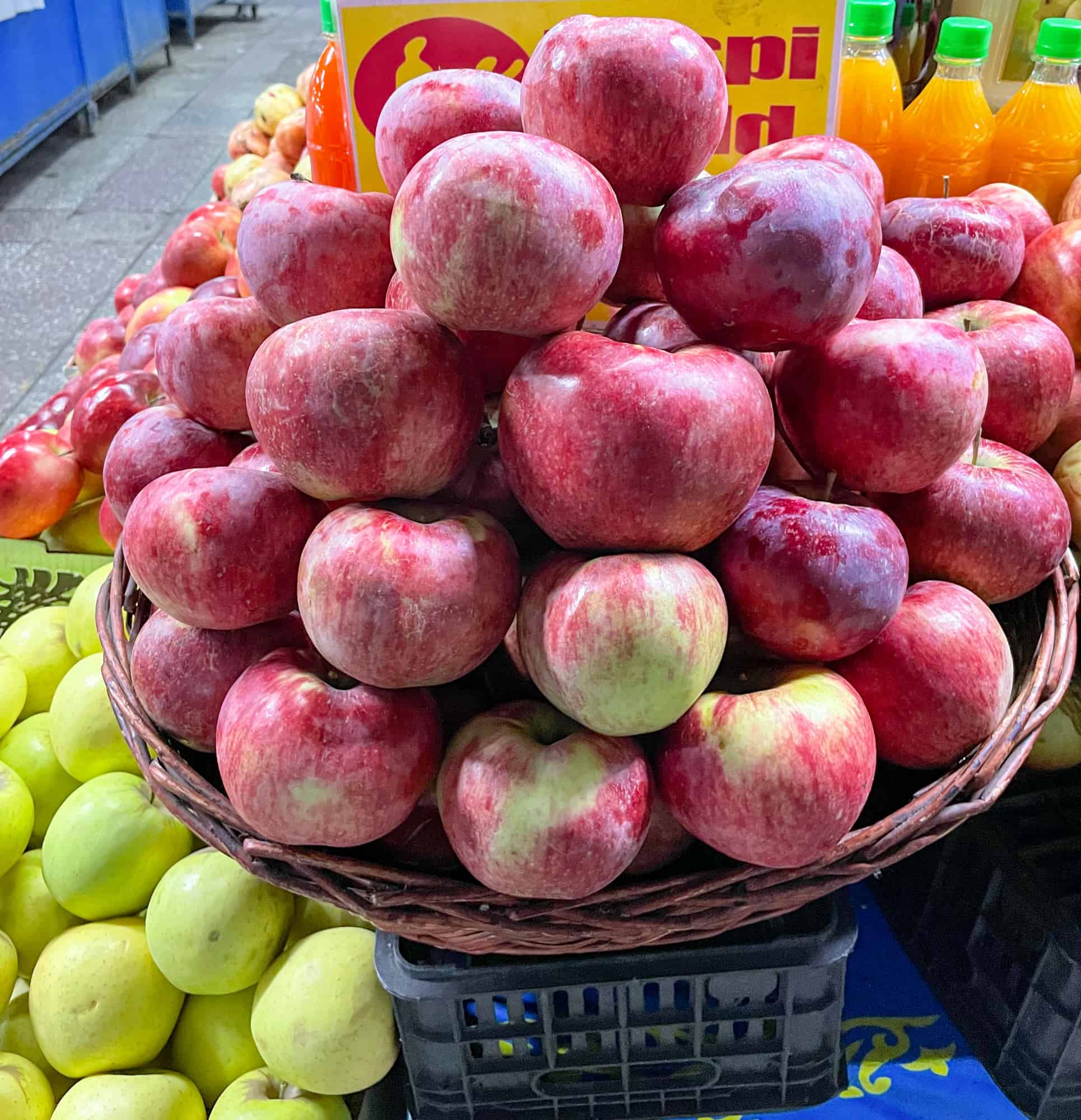
Apples. Kind of.
Apples are a big deal in Almaty. They are also big.
Grown in the Tang Shen mountains, genetic research by an Oxford professor claims that Almaty apples are the oldest apples in the world. The forefathers and mothers of apples, if you will.
And from there, it’s just a short hop, skip and a jump to make the connection between the original apple and the original sin.
That’s right. Folklore here claims that Almaty and the Tang Shen mountains must have been the real life Garden of Eden.
What’s more, the word for apple also has a double meaning. It’s called alma and it means “don’t touch.”
Bal Kaymak
This sweet, soft cheese slab comes drenched with honey and occasionally adorned with chopped walnuts. It’s traditionally considered a dessert but can also be found at breakfast bars and as a side dish to a main meaty feast.
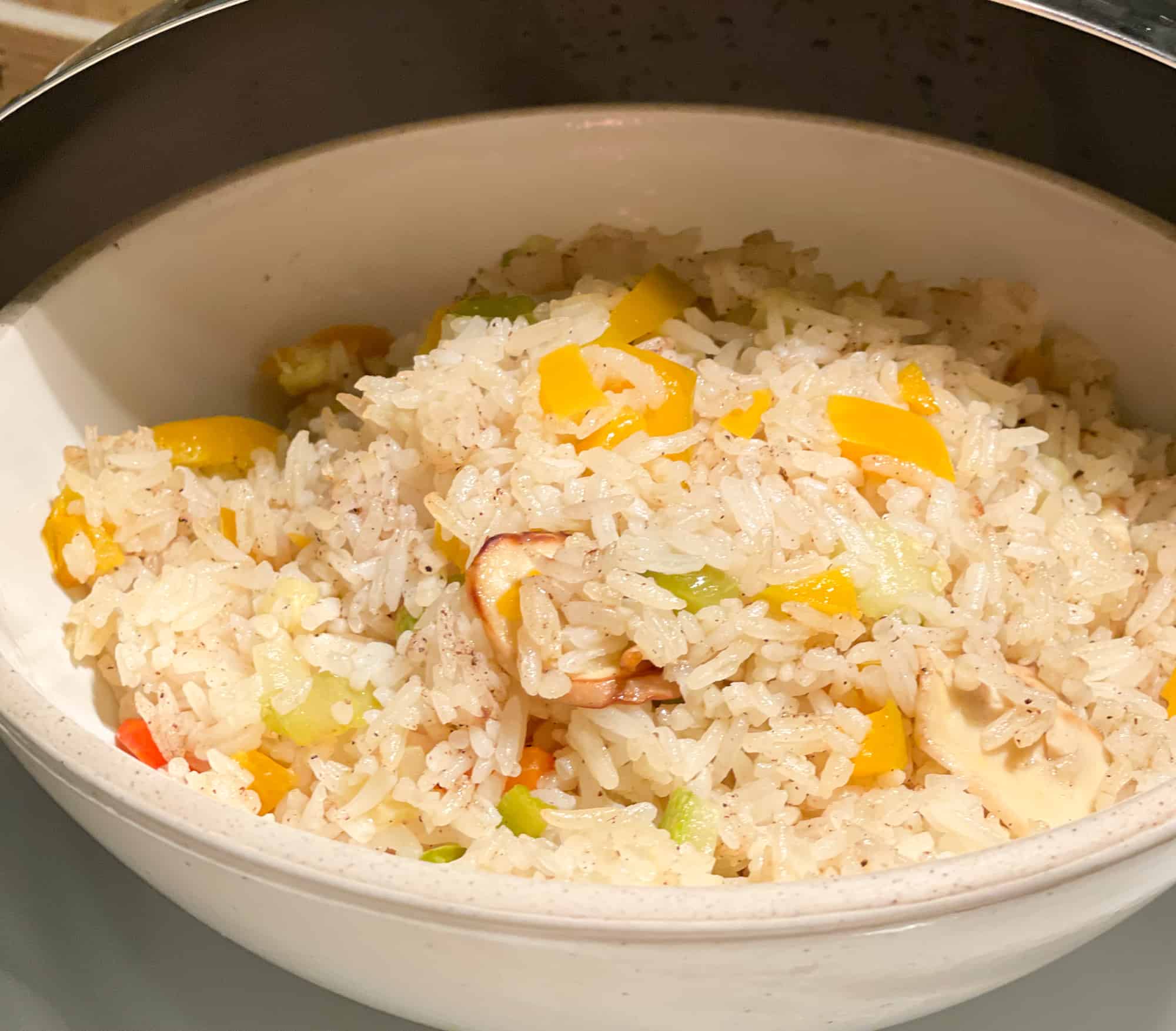
Pilaf and Poha
You will find these rice based dishes throughout Central Asia, with pilaf bearing more influence from Turkey and poha from the Indian subcontinent. Filling, seasoned and tasty, you’ll find them with almost every combination of vegetable and meat going.
Laghman Noodles
Laghman can refer to the noodles alone or the whole dish: a Central Asian mix of meat and vegetables with a distinctive Chinese influence.
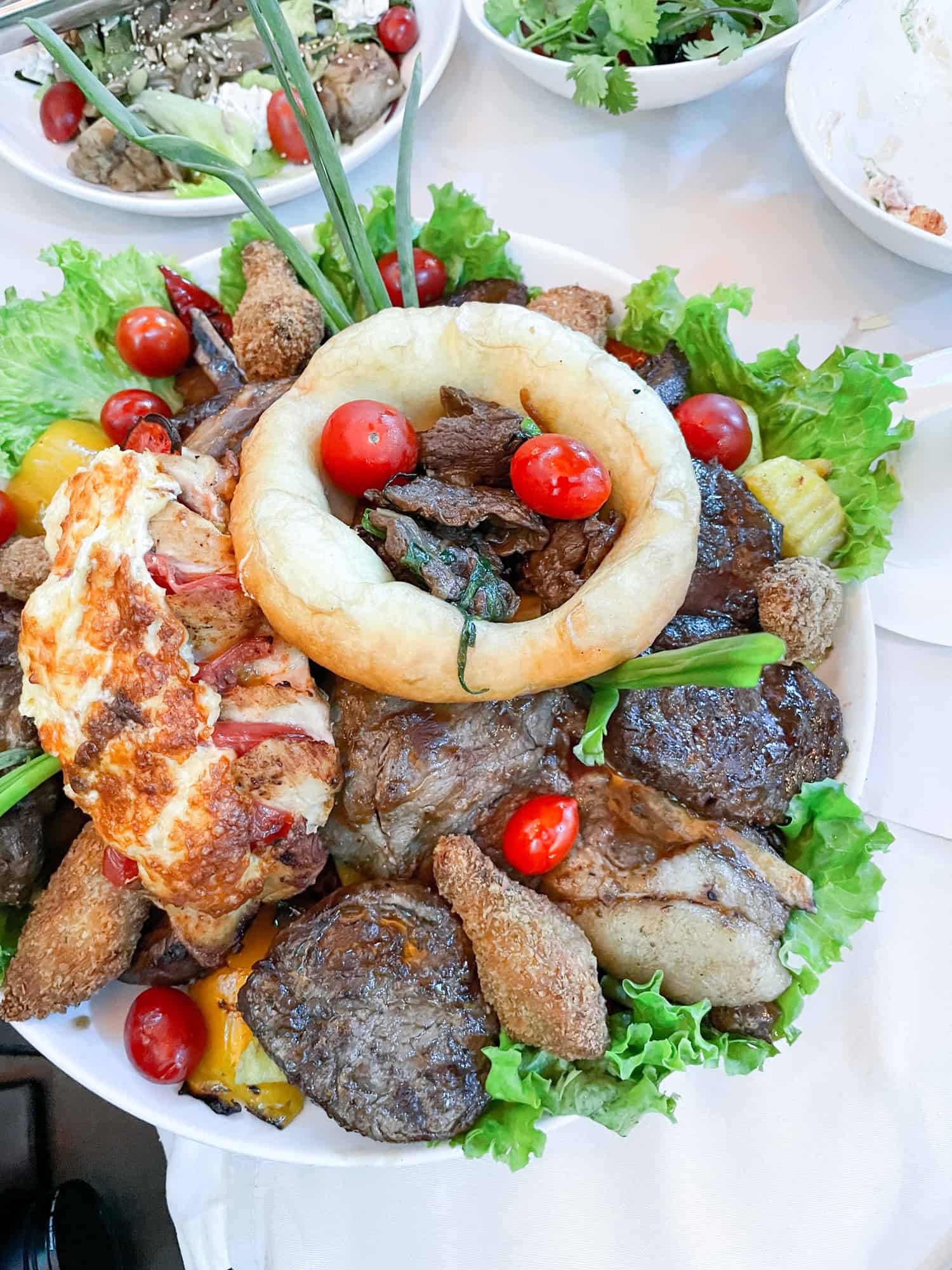
Grilled Kebabs
Although modern meals come with an explosion of salads and vegetables, at its heart, Kazakhstan is still a meat focused country with little concept of the vegetarian diet.
Grilled kebabs are popular, with light to heavy seasoning, among other slabs of meat and, of course, the kazy horse meat sausage.
Horse and lamb are the main meats in town. Pork products are rare since the main religion in Kazakhstan is Islam.
Kobra Hot Sauce
Look out for this spicy yet tasty addition, made from the root of a bush.
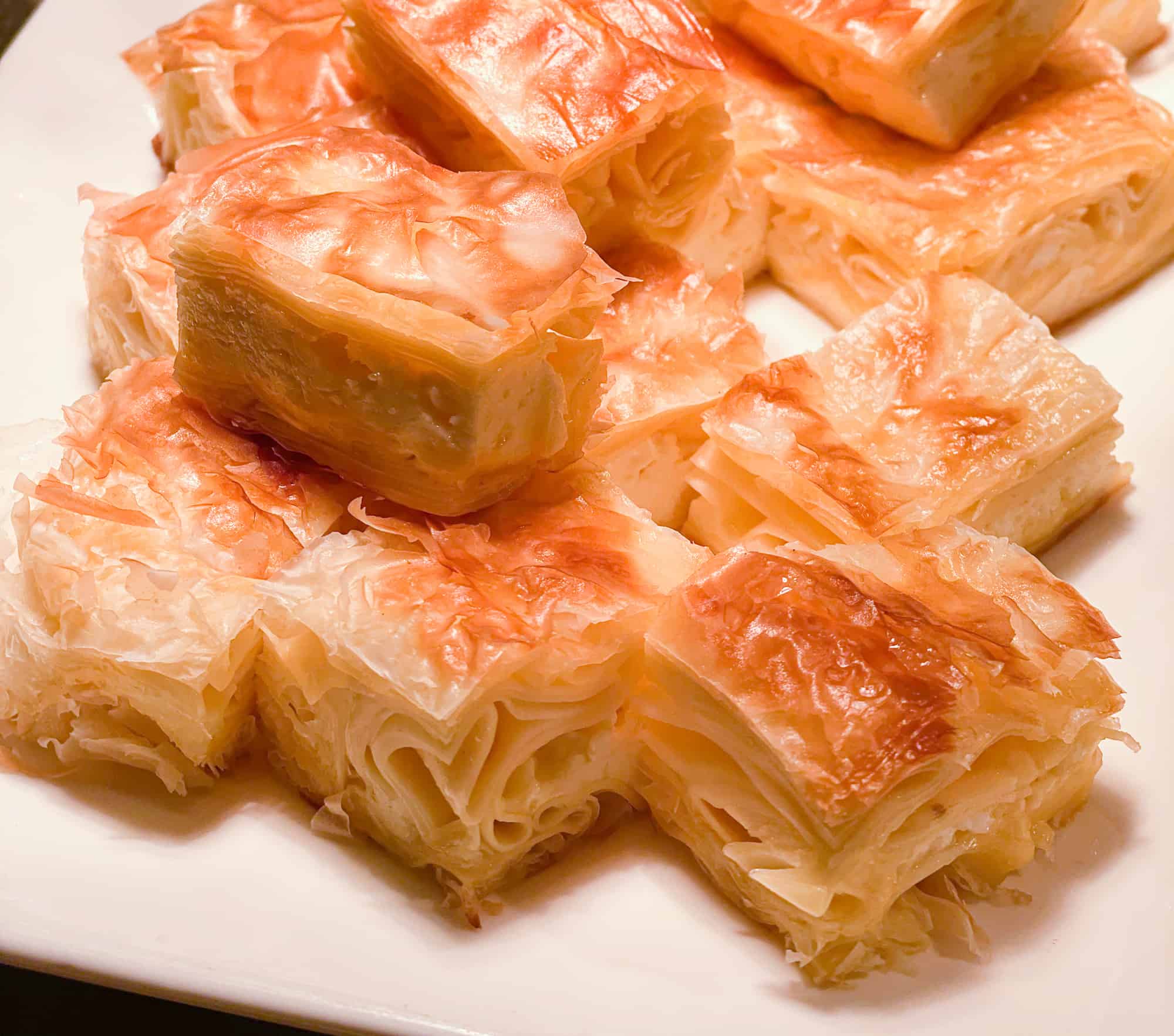
Borek
With a strong influence from Turkey, borek takes layers of fine filo pastry and wraps it around savoury contents like cheesy vegetables or meats. Also look out for the sweet version, the honey soaked baklava with pistachio and ground almonds.

Sweet Food in Kazakhstan
With a motto of “you won’t go home hungry,” you can expect dessert to feature at most meals out. Instead of puddings and chocolate, though, expect drier, mildly sweet products that would keep and travel well on the steppe.
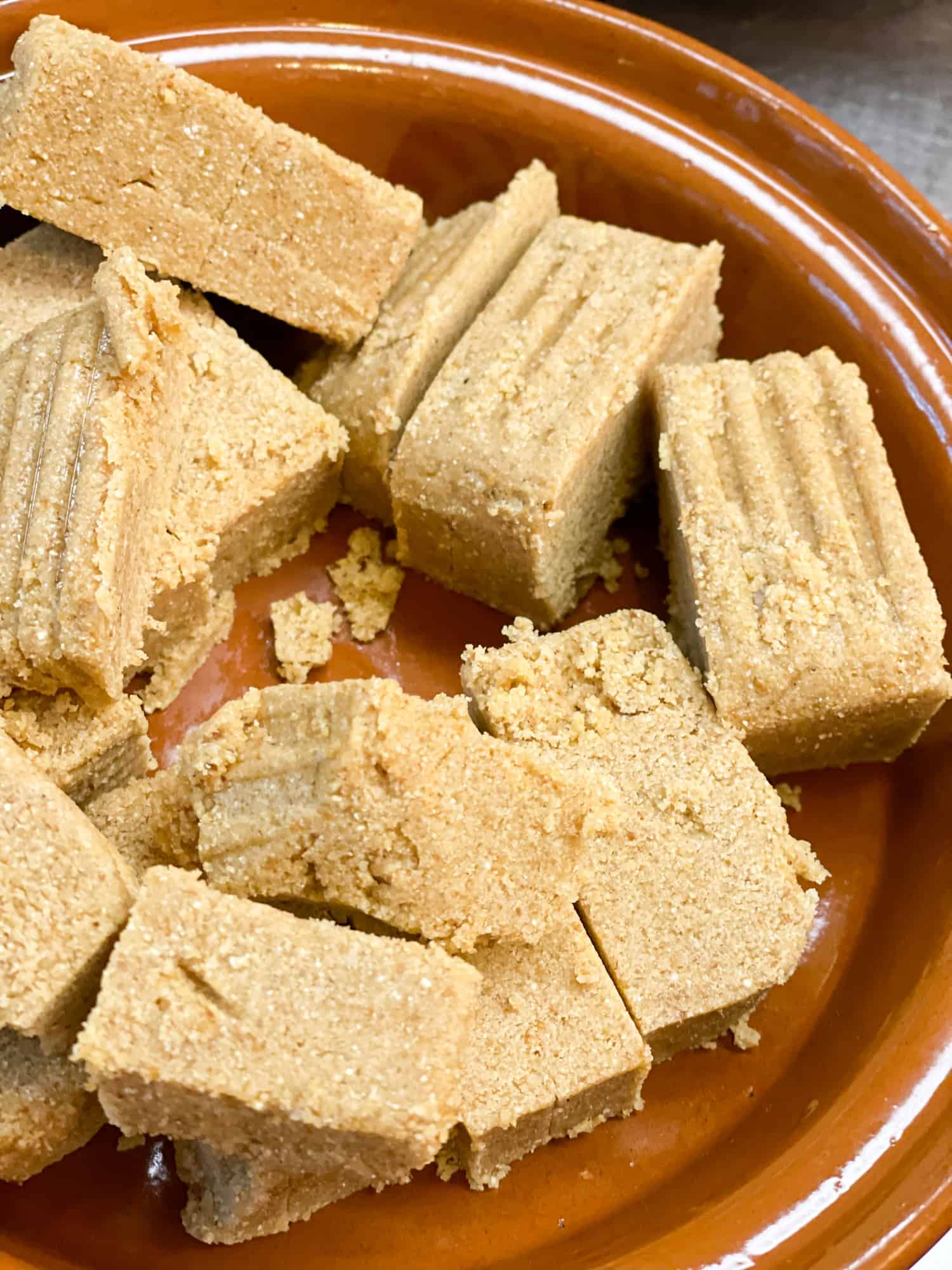
Zhent
Crumbly zhent takes talkan, a course flour made from fried barley or wheat, and mixes it with sugar, honey and butter to make a cross between an overdunked digestive biscuit and a slab of caramel fudge. Delicious.
Dried Melon Dessert
This looks like caramel but actually represents dried melon folded in and over itself. The texture is quite tough but gently sweet. A great palate cleanser.
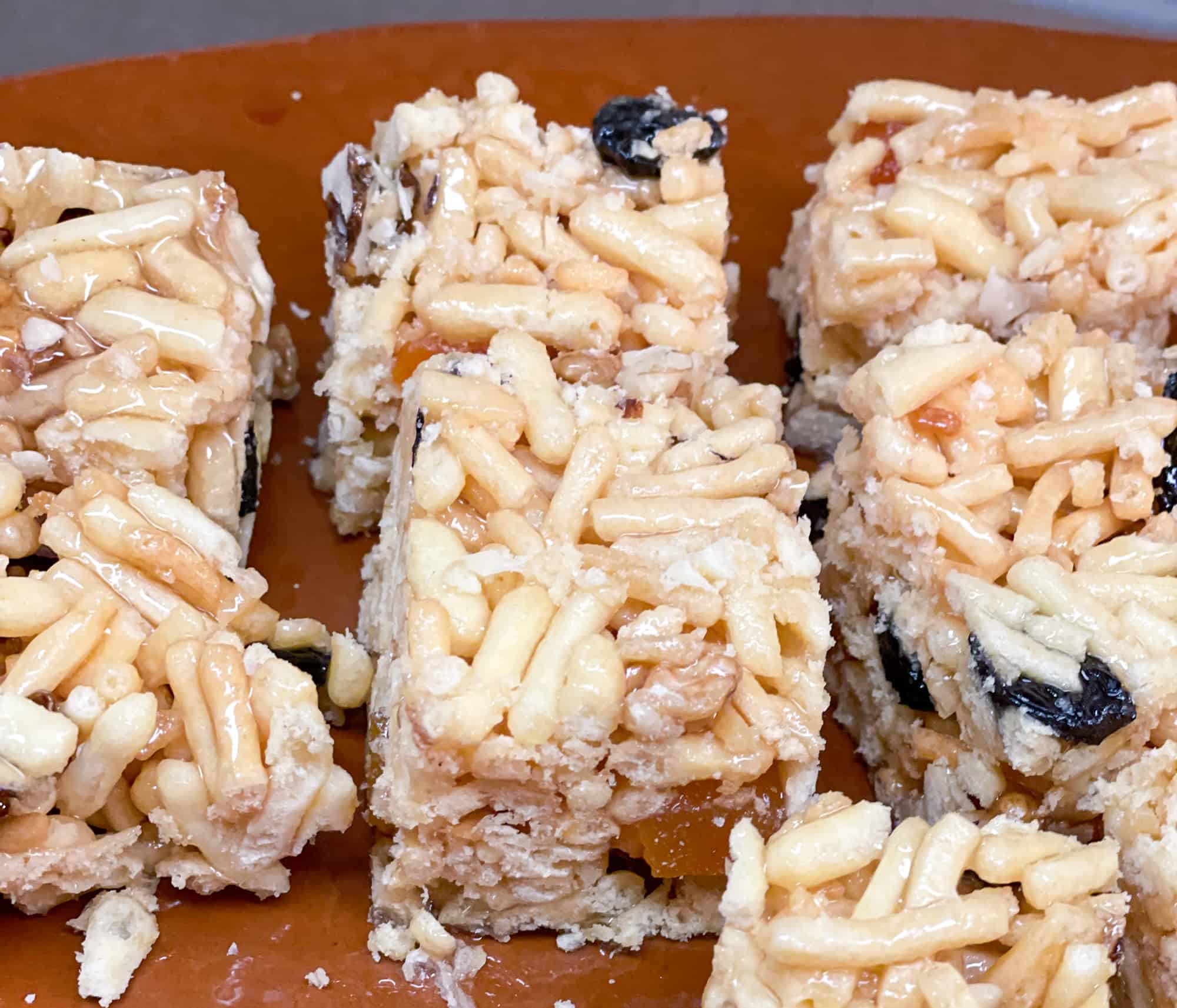
Chak-Chak
Chak chak may look like an elongated rice crispie cake but it’s not that at all. The small, worm-like fragments come from unleavened dough, rolled into balls or cubes and then deep fried in oil. It’s also spelled as Cäkçäk and is one of Russia’s national sweets.
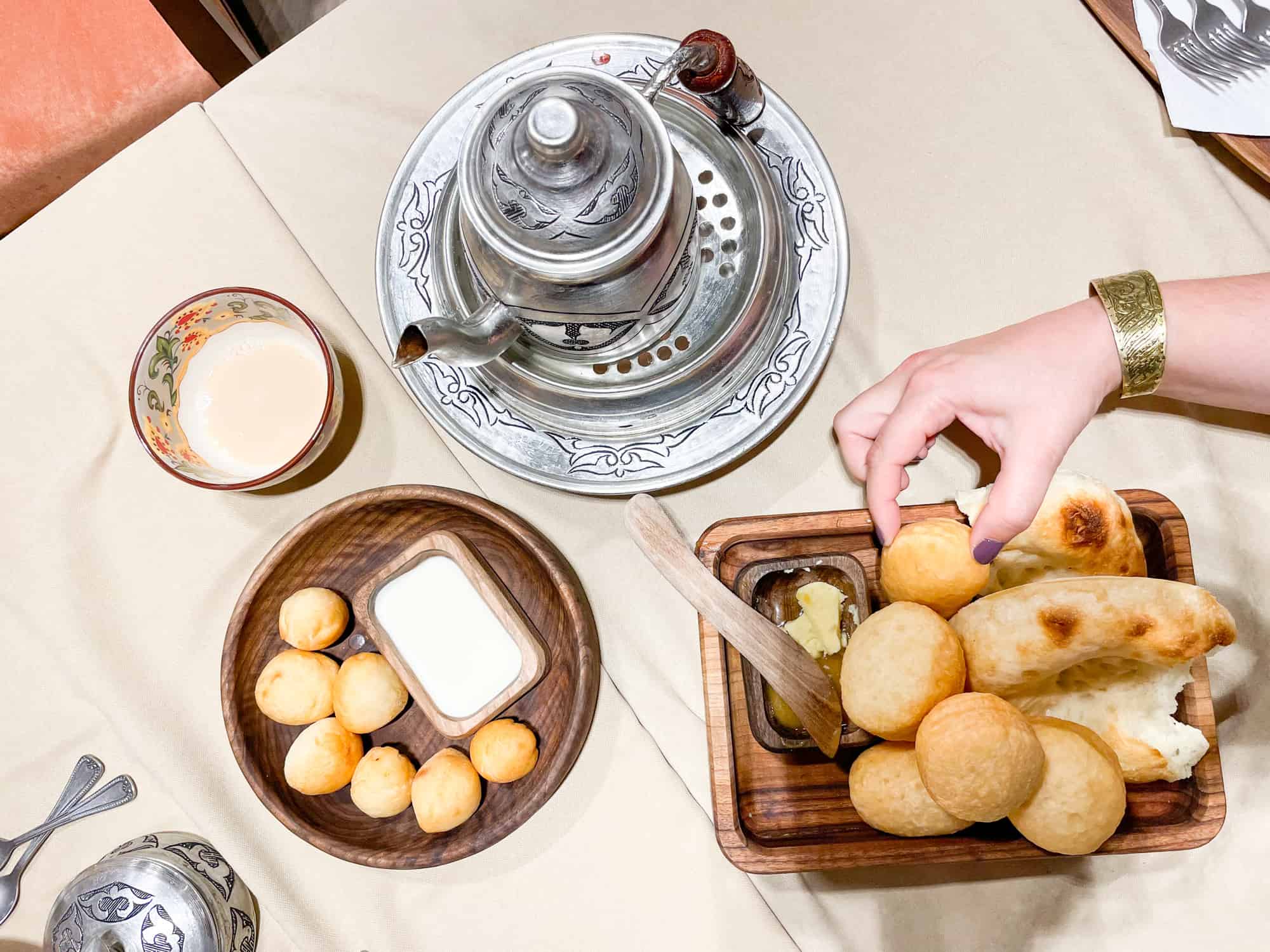
Table Manners in Kazakhstan
Meals are for celebrating in Kazakhstan, with meals out involving several courses and side dishes. Traditionally, people eat with their fingers but in most cities and modern restaurants, you’ll be given cutlery.
Oh, and steer clear of talking about Borat. It’s not seen as respectful and it’s best to stay quiet.
Look out, too, for the current trend of dancing between courses. The lights go down, the music comes on and everyone heads to the dance floor…
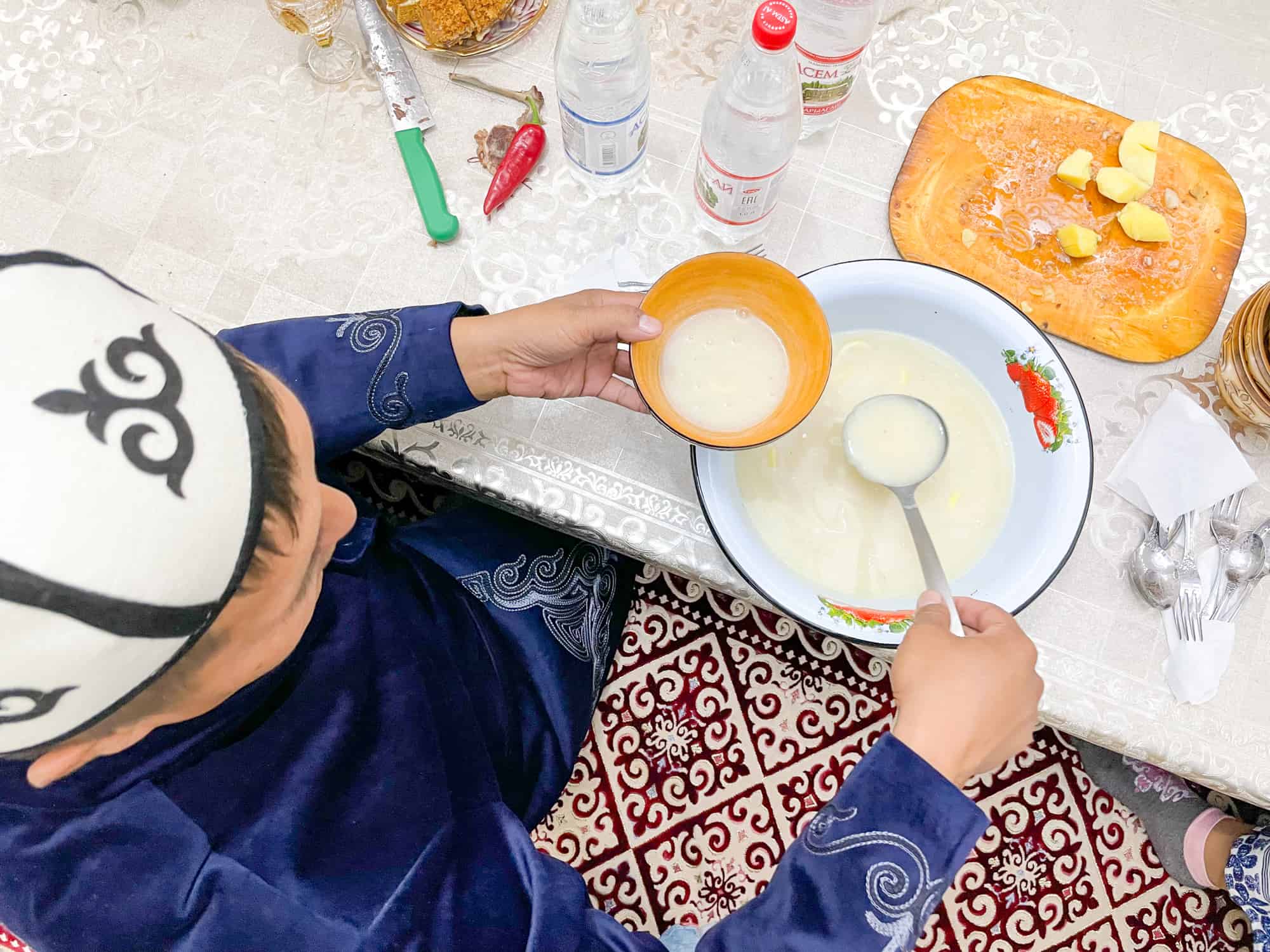
Drinks in Kazakhstan
While Islam remains the main religion in Kazakhstan, years of communist rule have softened some of the connections between religion and daily practices. Alcohol is not illegal, although it is not that common in rural and more conservative areas. Kazakhstan’s big cities, however, have bars aplenty.
Instead, you’ll often be offered sweet, syrupy squashes and fruit juice, a whole lot of tea and a full range of different fermented milk products.
Let’s get talking.
Shubat – Fermented Camel Milk
Slightly sour with an even slighter fizz, shubat comes served in wooden bowls to accompany many a meal. It’s fermented camel’s milk and you’ll find versions of it across the Turkic countries in Central Asia. Neighbours may call is chal but in Kazakhstan, people call is shubat. And it’s said to bring good luck.
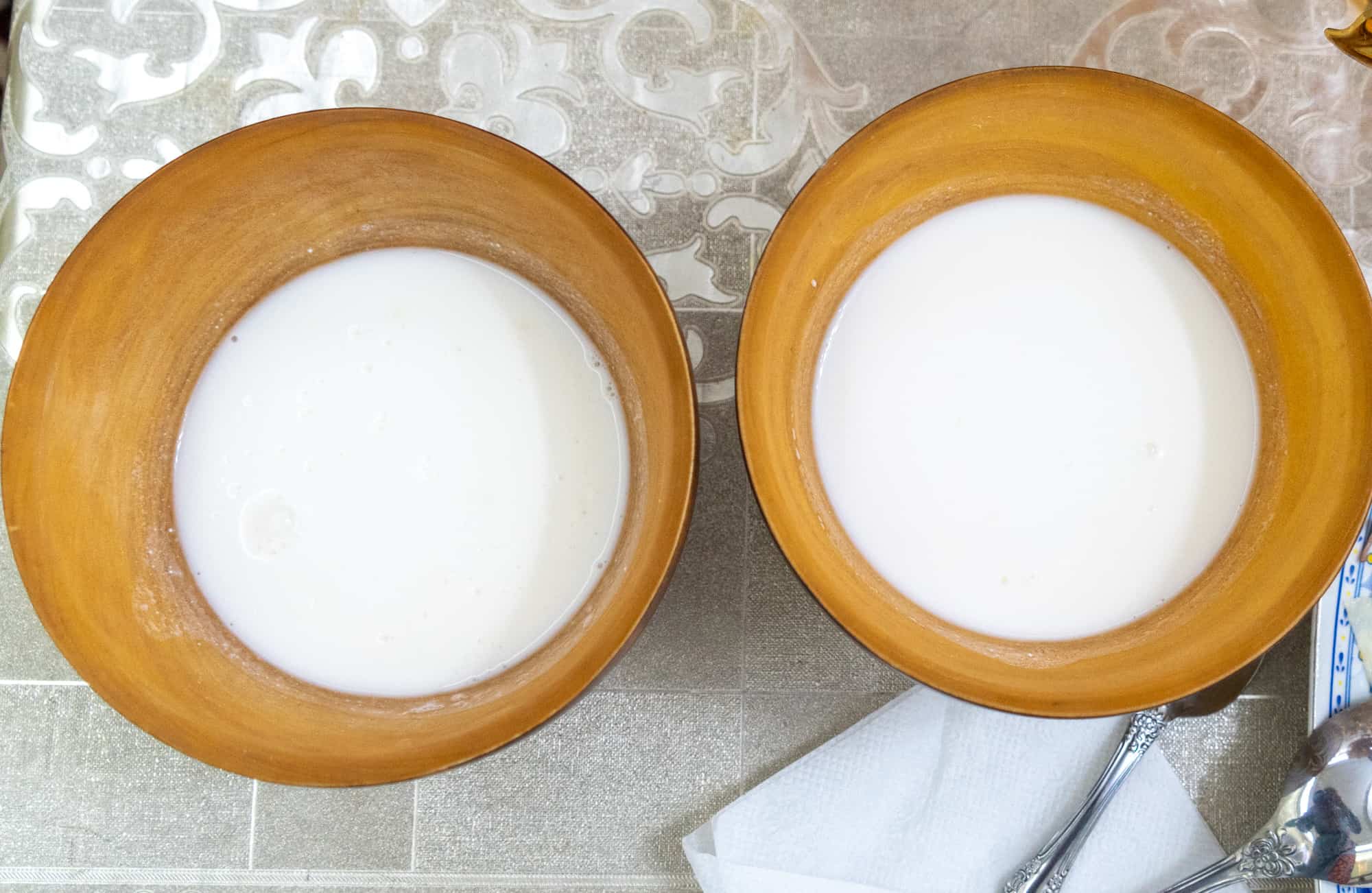
Kumis – Fermented Milk Drink
Sometimes spelled Kumys, this is another drink which Turks claim on Wikipedia but Kazakhstanis claim on the ground.
It consists of fermented horse milk and friends gather together to celebrate the first and last kumis of the season.
Shalap – Fermented Milk Drink
What’s better than fermented milk? Fermented milk with water and some herbs! Shalap is a kind of non-alcoholic cocktail made from either kumis or shubat. It’s a surprising taste for those of us not used to it but then, isn’t that the joy of travel and trying something new?
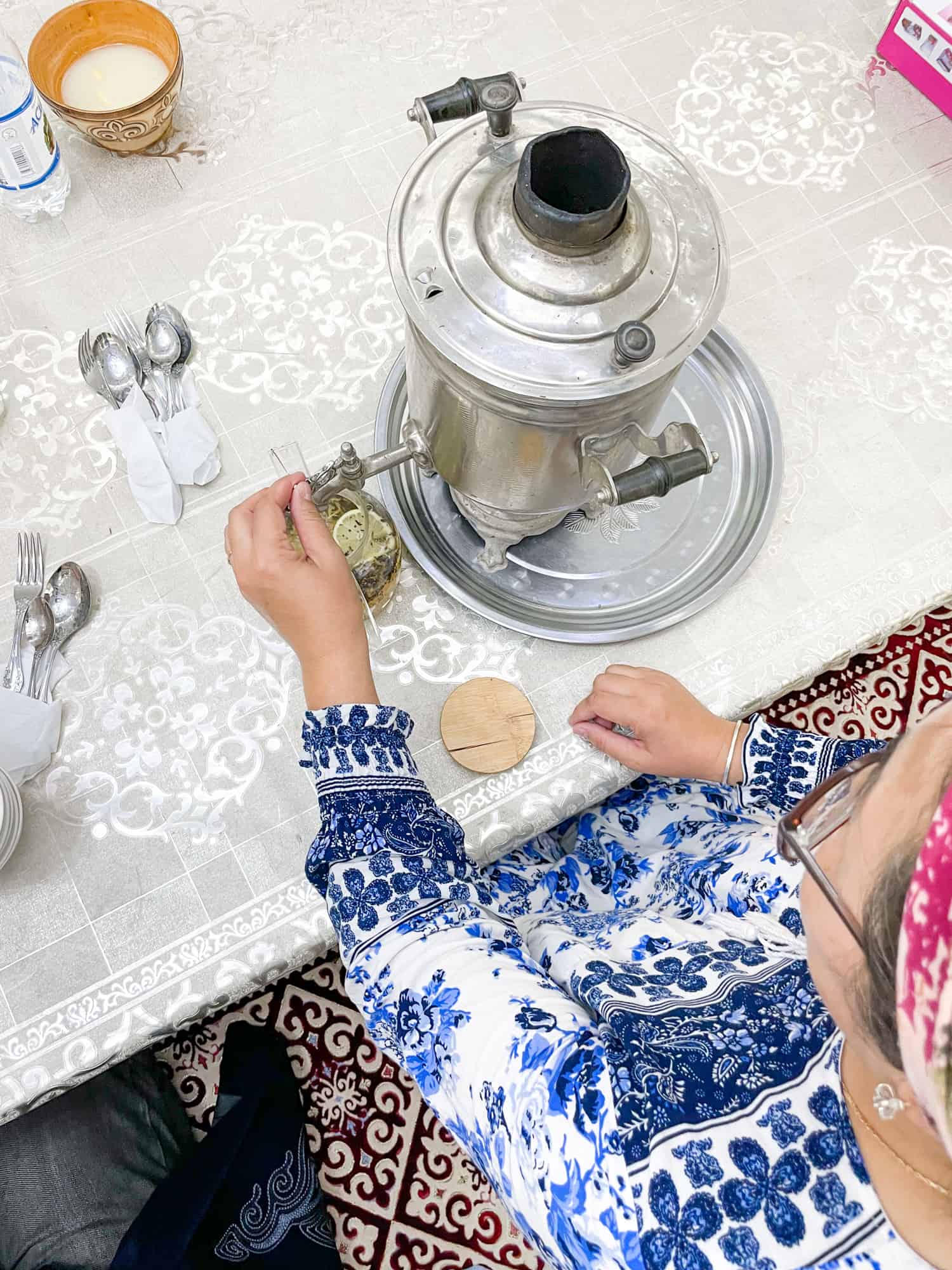
Samovar for Tea
Most families have their own Samovar, a metallic Russian tea chest that can brew the drink on a massive scale. Tea frequently comes with different herbs and spices added, from cloves to rose buds if you prefer.
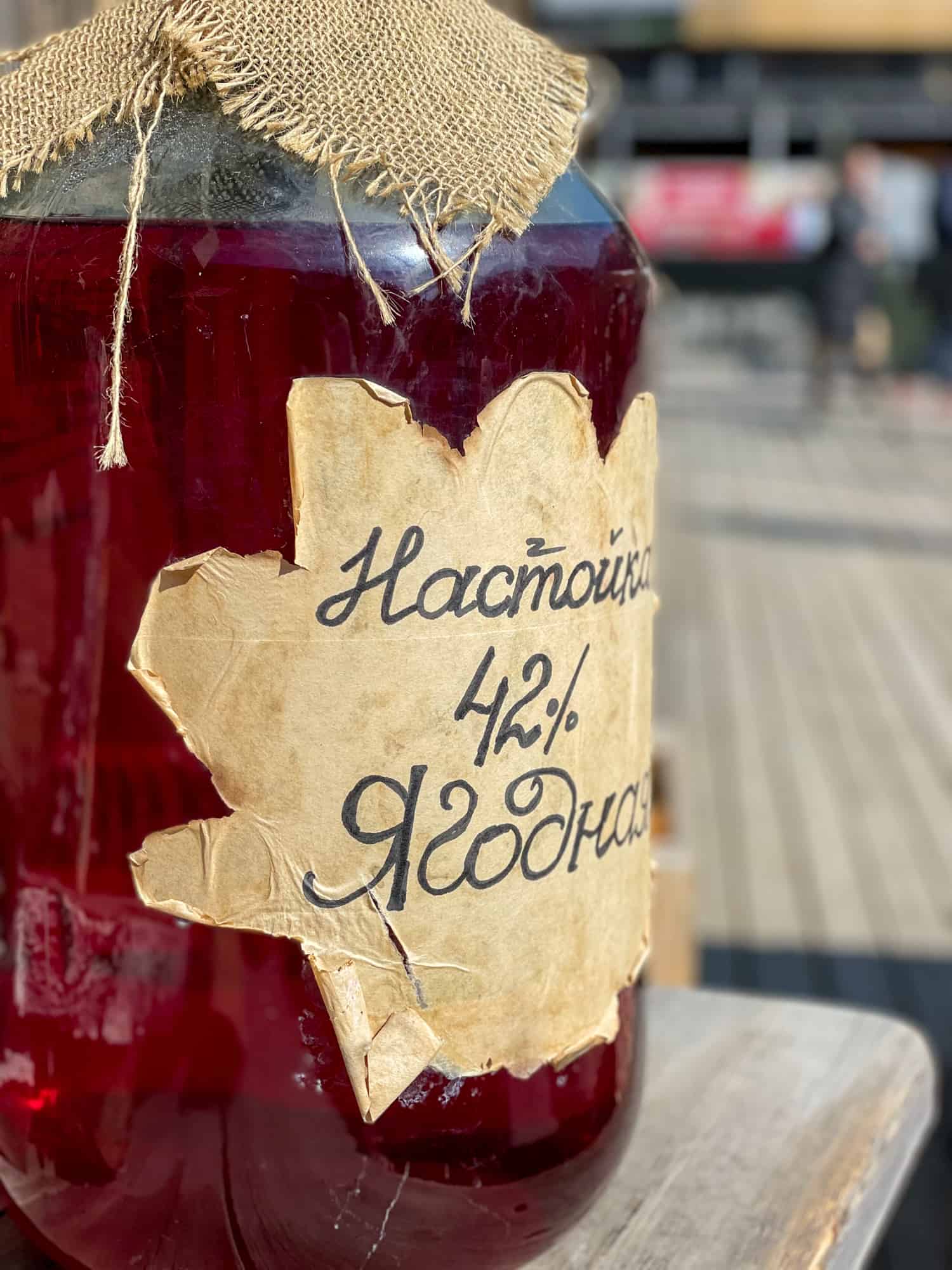
Herbal Liqueurs in the Mountain
Like many good mountain ranges in the world, the mountains near Almaty have fashioned their own herbal alcoholic drinks from traditional local recipes.
The Medeo Skating Rink draws a crowd as the highest ice rink in the world and the Shymbulak Ski Resort nearby entertains visitors with herbal schnapps made within their chalets.
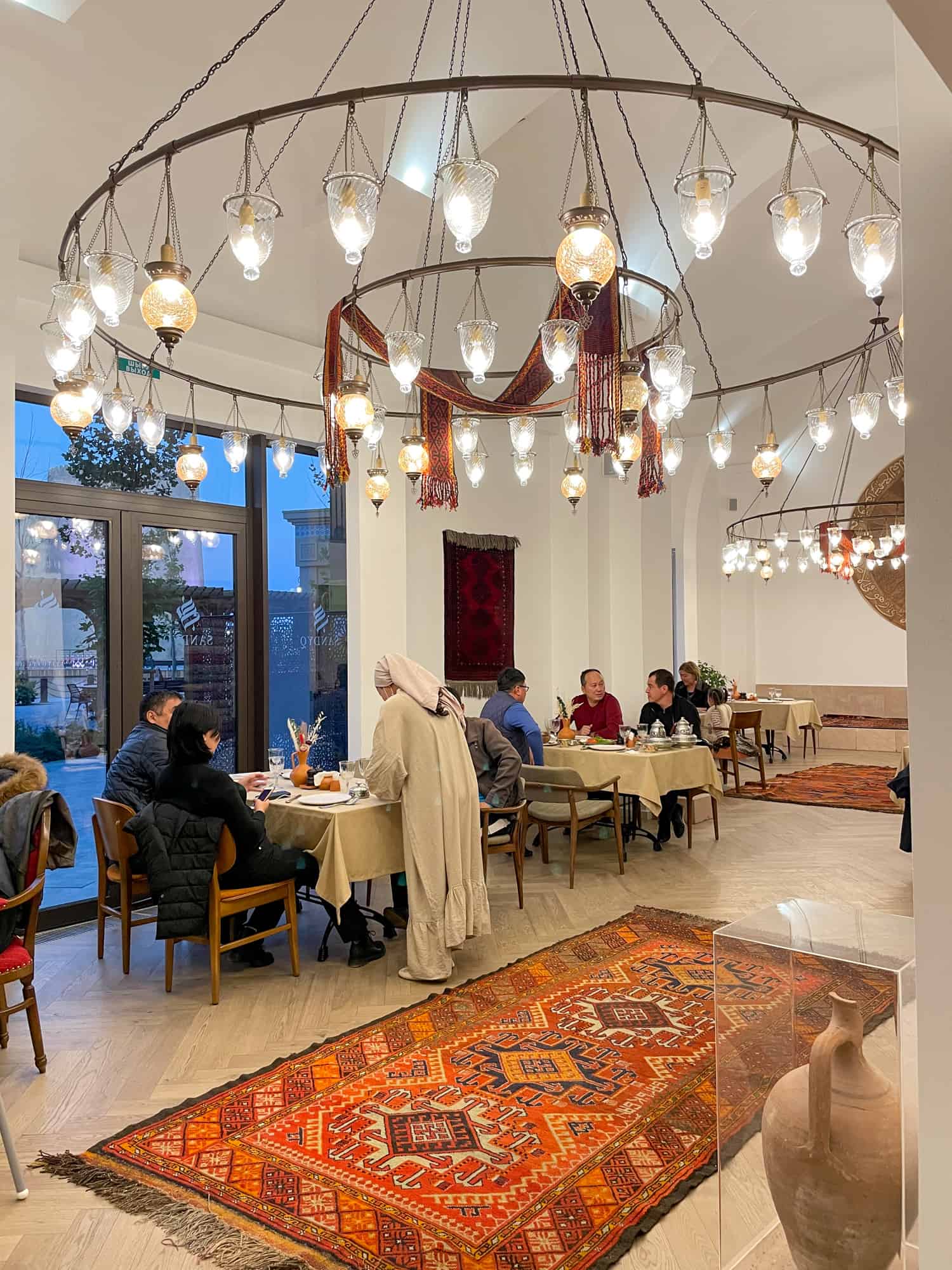
Recommended Restaurants in Kazakhstan
Almaty
- Alasha – plenty of traditional Kazakh dishes set in a beautiful courtyard with occasional dance performances.
- Qaimaq – traditional Kazakh and Uzbek dishes with a shady garden and large terrace.
- Navat – check out the salads and Georgian cheese breads.
- Nino Restaurant – Georgian cuisine and frequent live music.
Turkistan
- Edem – fresh salads amid traditional Kazakh dishes.
- Eposia in the Karavansaray complex – upscale versions of traditional food, with traditional artefacts on the walls. Don’t miss the Kyz Zhibek and Tolege Boat Show outside afterwards.
- Zoloto – disco dining, with dancing in between courses.
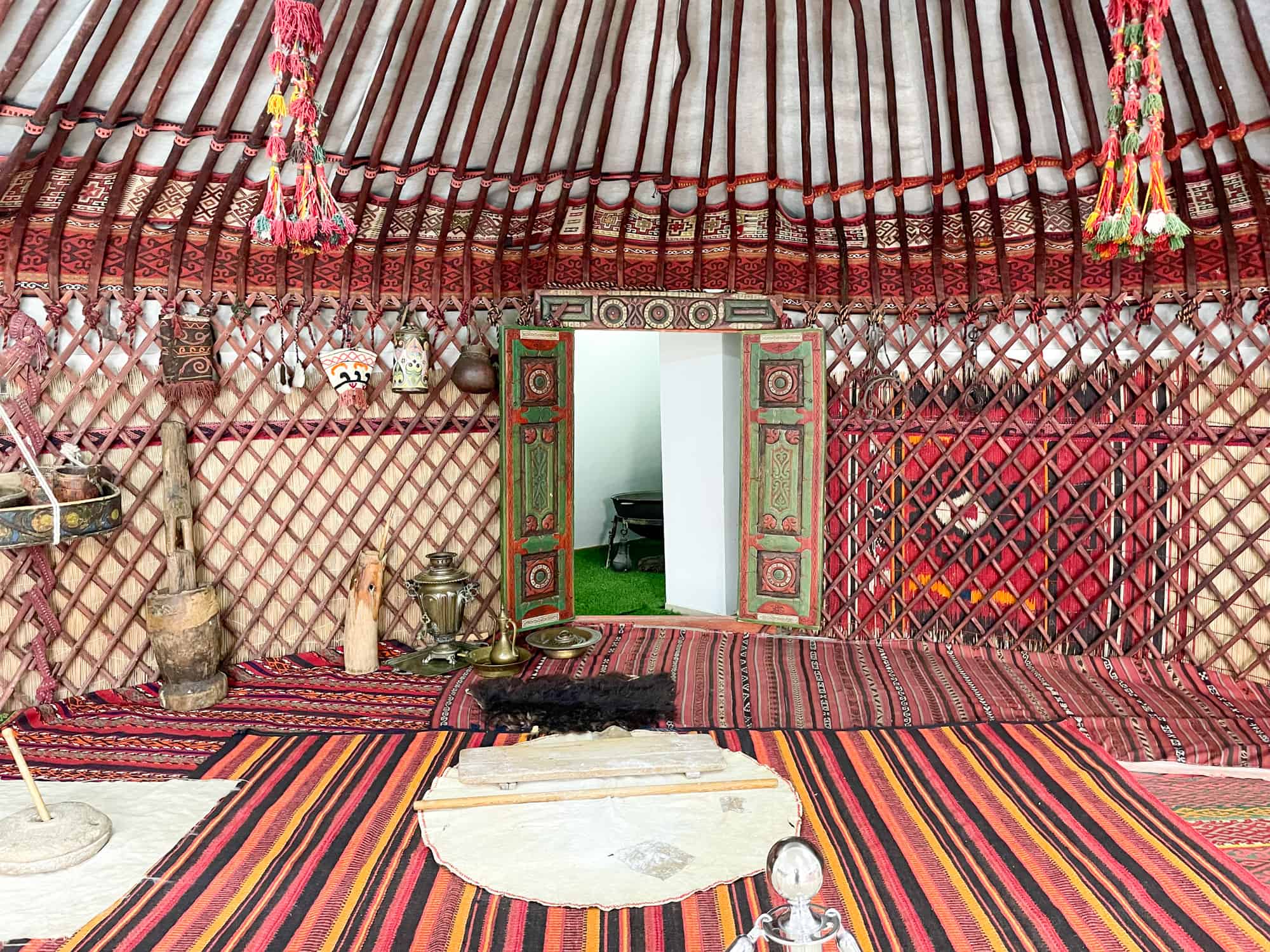
The Influence of the Nomadic Lifestyle on Kazakhstan Cuisine
For years, Kazakhs roamed the windswept steppe of Central Asia, carrying their homes and belongings with them. They rode in convoys of camels and horses, with little chances for refrigeration and storing solutions for products like pickles, jams and other preserves.
And you can see that influence in Kazakh cuisine today.
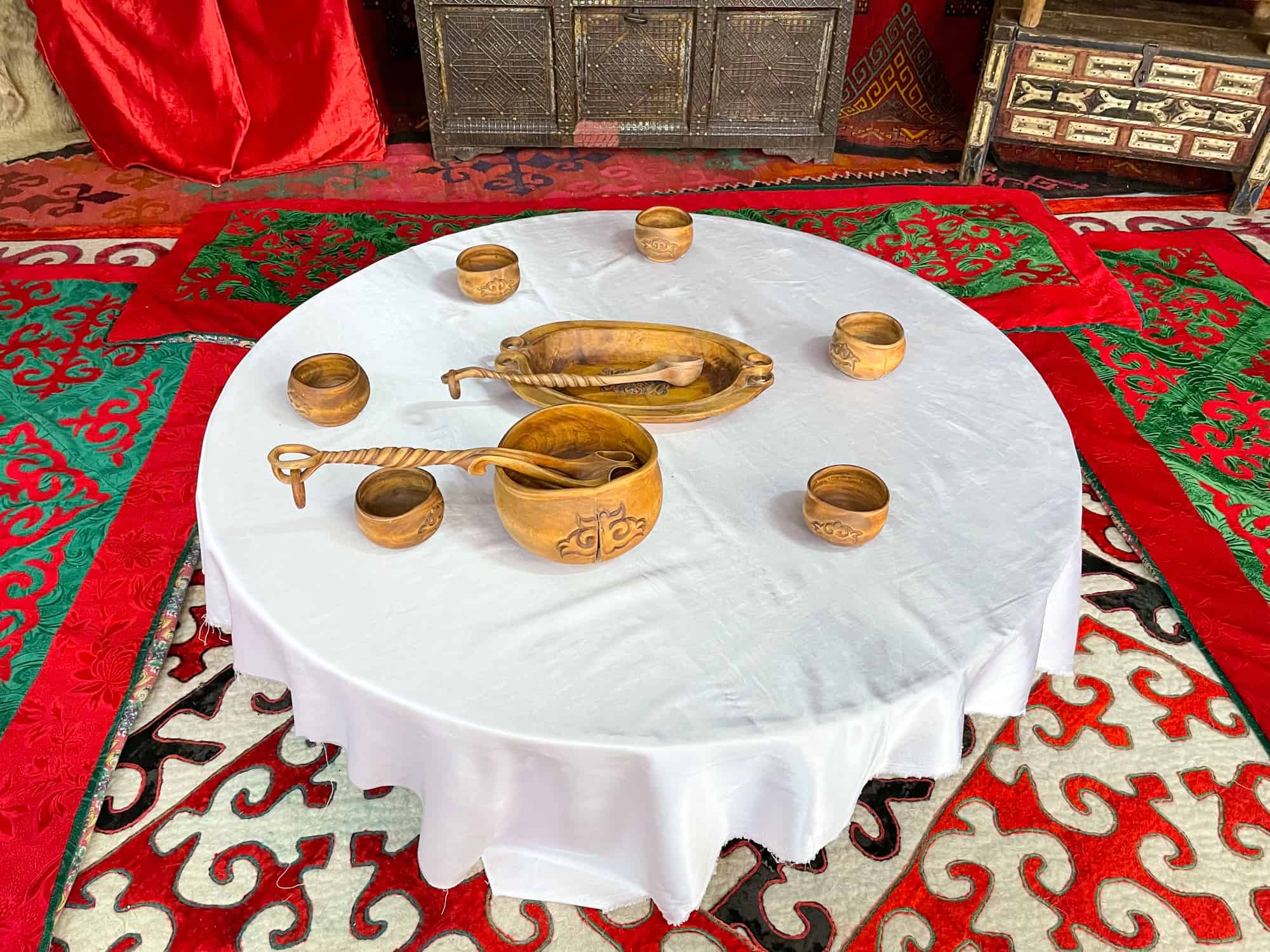
The tables are set low and traditional dishes are eaten by hand. Every part of an animal is used and celebrated and sweets tend to be hard, non messy and extremely portable. The fermented milk drinks last longer than fresh milk.
Yet Kazakhstan is also an extremely multicultural place, thanks to its borders with numerous countries and the practice of transporting dissidents here from across the USSR for punishment. So while Kazakh cuisine has a nomadic element, Kazakhstani cuisine, which refers to the whole country, has a much broader base.

The Future of Food in Kazakhstan
Like so many places in the world, Kazakhstan has welcomed in the golden arches of McDonalds, along with culinary influences from countries closer to hand. So what does the future hold?
The Foundation of Nursultan Nazarbayev, for example, is currently focusing on preserving the traditions of the country, and that includes the food, while also encouraging new interpretations and developments in a forward thinking way.
I can’t wait to see how the culinary scene in Kazakhstan develops over the next few years. Watch this space…
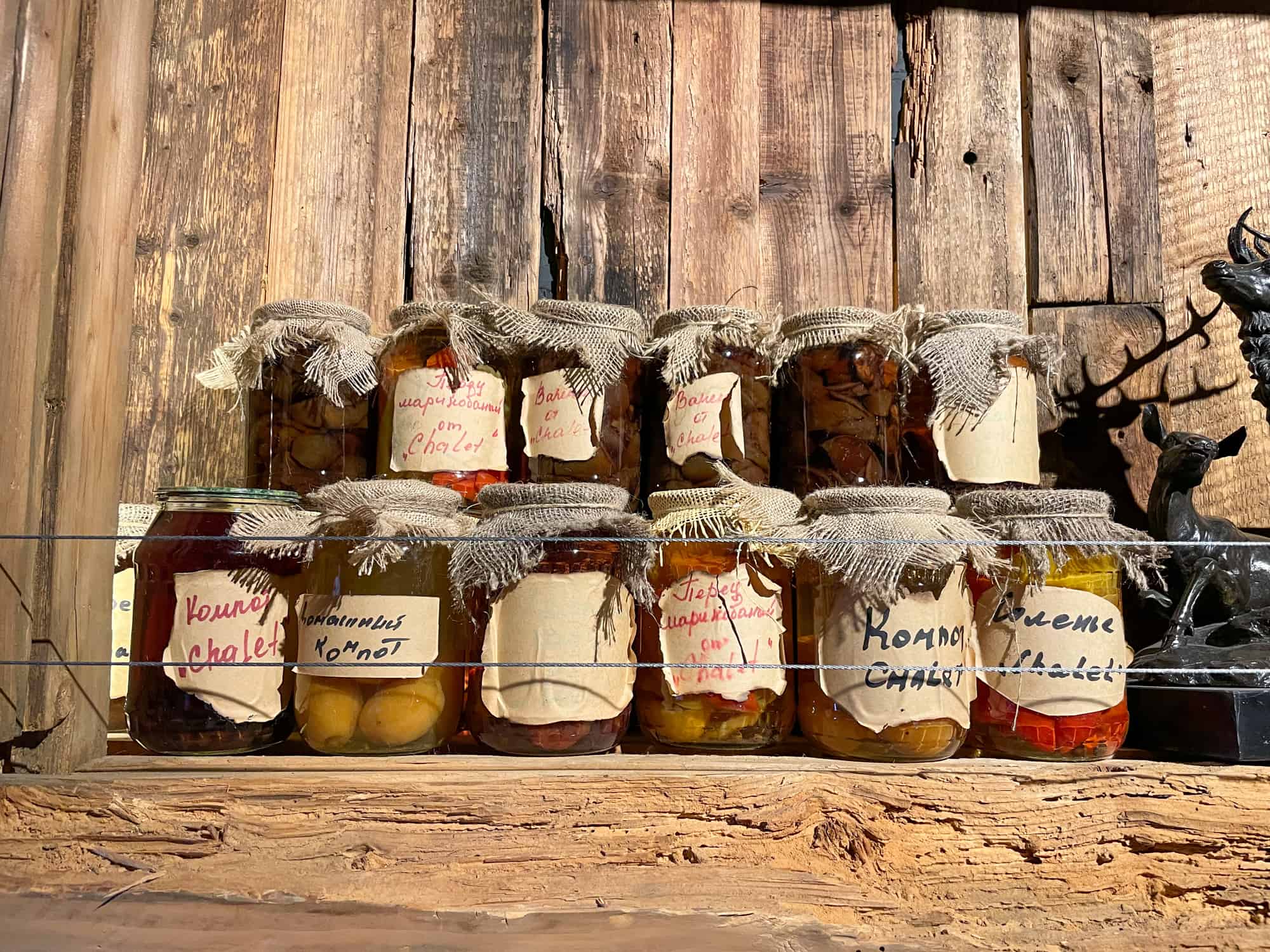
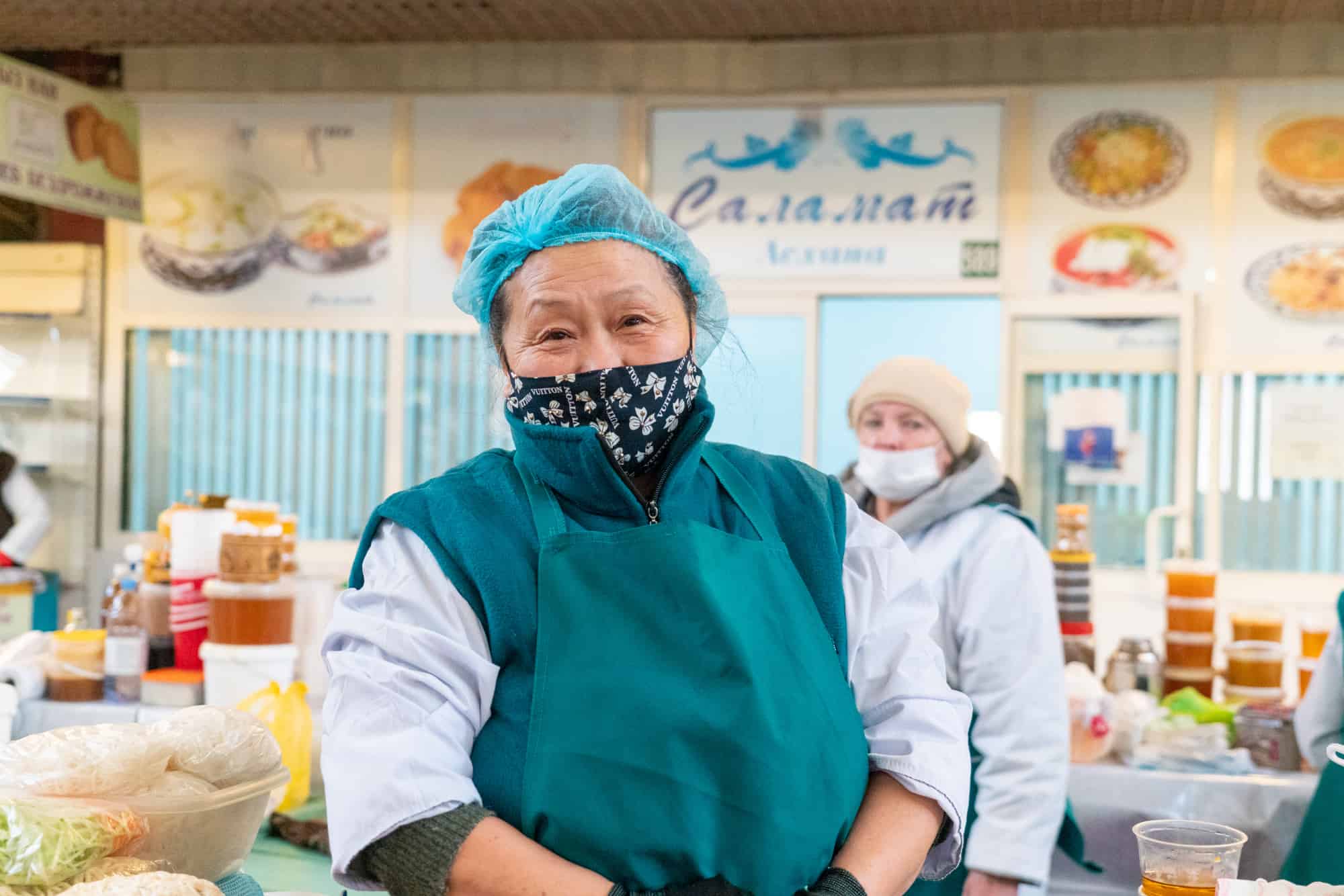
Zelenyy market in Almaty
For a real treat and a glimpse into the breadth of Kazakh cuisine, head into the Green Bazaar or Zelenny Market in Almaty.
It’s not for the squeamish: expect to see butchered horse meat, sliced ribs and those skinned sheep skulls. But that’s only a small part.
You’ll also be able to taste a range of kazy, see the vast tubs of herbs and spices used for traditional medicine, stock up on vitamin C through fresh fruit and vegetables and dip in and out of the types of Kazakh cheese.
Just always to remember to ask for permission before you take a photo, approach with an open mind. And find the bargains on the lower floor.
You can also stock up on local souvenirs, such as bags, hats and shoes made from pressed camel wool with national motifs.
Happy shopping!
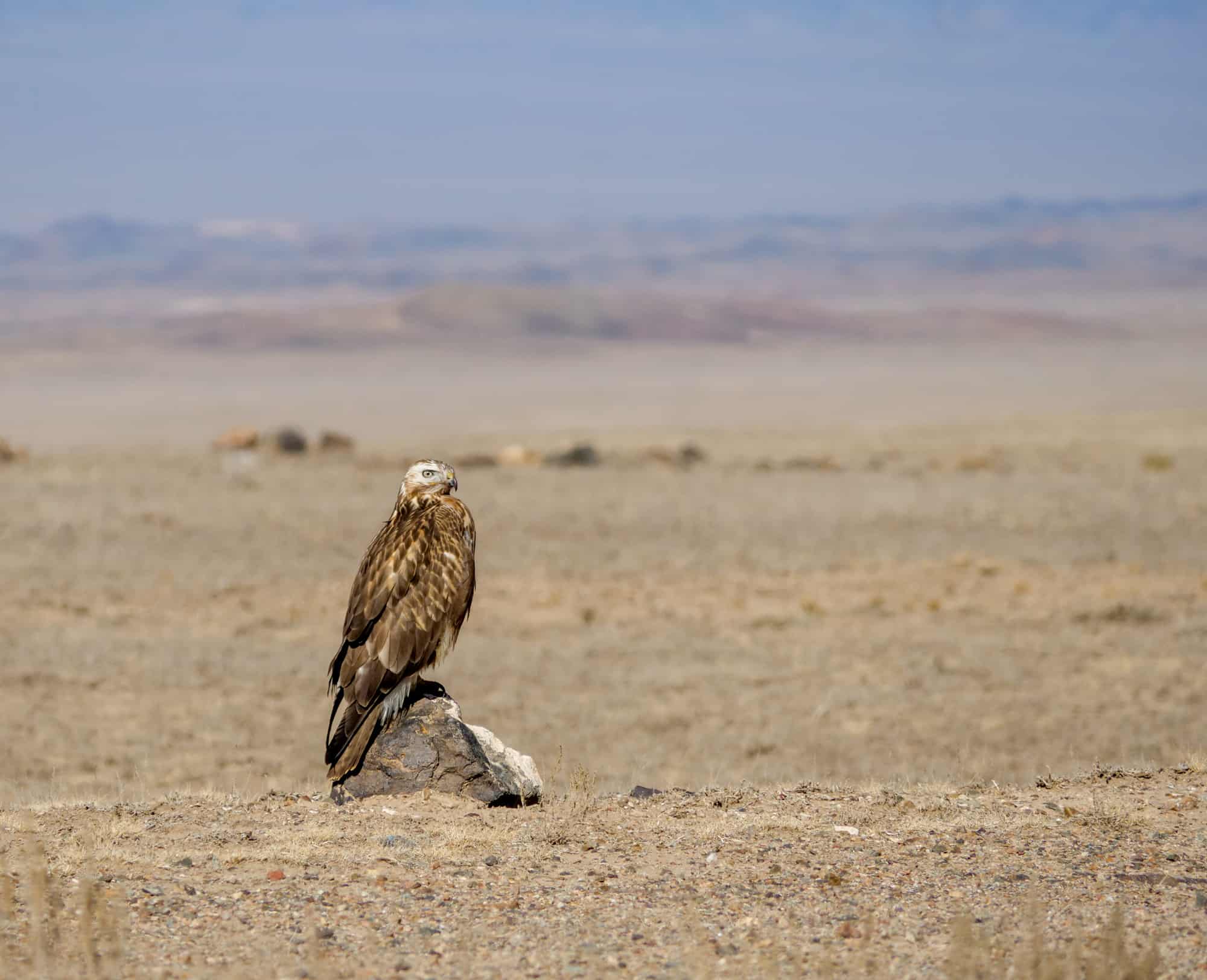
When to Visit Kazakhstan
Kazakhstan is a vast country with a diverse climate, making it an attractive destination all year round. However, the best time to visit depends on your interests and what you want to experience. If you want to explore the cities and historical sites, the best time to visit is during the spring and fall seasons (April to May and September to November) when the weather is mild and comfortable. Summers in Kazakhstan can be quite hot, with temperatures soaring up to 40°C, which can make sightseeing uncomfortable.
If you want to experience the natural beauty of Kazakhstan, the best time to visit is during the summer months (June to August) when the weather is warm and pleasant. This is a great time to visit the mountains and enjoy outdoor activities such as hiking and camping. If you’re interested in winter sports, the best time to visit is during the winter months (December to February) when the mountains are blanketed in snow, and you can enjoy skiing and other winter sports. Ultimately, the best time to visit Kazakhstan depends on your preferences, and there is something to do and see in every season.
At a glance:
- The best time to visit Kazakhstan is during the summer months of June, July, and August when the weather is warm and dry.
- If you are interested in winter sports, then the months of December, January, and February are ideal for skiing and snowboarding in the mountains.
- Visiting during the spring months of March, April, and May can be a great time to see the blooming wildflowers and enjoy the mild weather.
- The autumn months of September, October, and November can be a good time to visit Kazakhstan if you enjoy cooler temperatures and fall foliage.
- Additionally, if you are interested in attending cultural events and festivals, it is recommended to plan your visit around the dates of these events.
More About Travel in Kazakhstan
- Interesting facts about Kazakhstan that will surprise you
- Inside the beautiful Mausoleum of Khoja Ahmed Yasawi
- Beshbarmak: Kazakhstan’s National Dish
Disclosure: I visited Kazakhstan as a guest of the Foundation of Nursultan Nazarbayev, established in 2000 by Nursultan Nazarbayev, the First President of Kazakhstan. As ever, I kept the right to write what I like! Otherwise, what’s the point?

I loved this article!!! – felt I just had an intriguing buffet of food I never heard of or tasted! with heartwarming stories like the cheese ball stoning. Thank you for writing this!
I do love that side of travel. That after all these years and all these different places, you can still find different food to back home! Great stories, too.